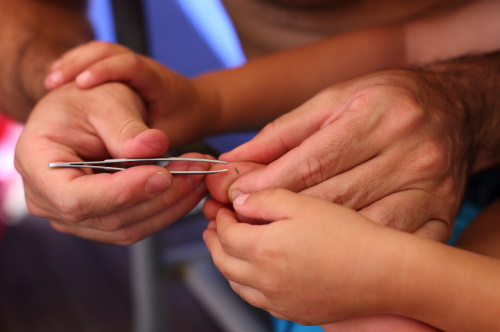Introduction
Every moms and dad's problem is the idea of their newborn dealing with a vital emergency. Understanding cardiopulmonary resuscitation (CPR) methods especially customized for newborns can be the distinction in between life and fatality in such situations. Yet, lots of moms and dads are uninformed of the distinct procedures associated with doing CPR on babies. This comprehensive guide aims to outfit every moms and dad with essential knowledge and skills pertaining to CPR on newborns, diving into unique methods that can conserve lives.
CPR on Newborns: One-of-a-kind Strategies Every Parent Need To Know
Cardiopulmonary resuscitation (CPR) is a lifesaving strategy utilized in emergencies when a person's breathing or heart beat has actually stopped. While the majority of people know with grown-up CPR, the techniques vary dramatically when it involves babies. The fragile nature of a newborn needs particular methods that differ from those made use of on older kids and adults.
Understanding Newborn Composition and Physiology
Before delving right into CPR strategies, it's critical to recognize the anatomy and physiology of a newborn. Babies have smaller lungs, fragile ribs, and a different circulatory system than adults. Understanding these differences can aid moms and dads perform CPR more effectively.
The Importance of Airway Management
Newborns' air passages are smaller sized and a lot more vulnerable to blockage; thus, respiratory tract administration is crucial throughout an emergency. Parents must find out how to appropriately remove an airway to make certain reliable breathing restoration.
Recognizing When to Perform CPR
One of the initial steps in any emergency situation is acknowledging when CPR is required:
- Unresponsiveness: If your infant isn't responding or moving. No Breathing: If your child isn't breathing usually or at all. Abnormal Skin Color: A blue tint around lips or face suggests lack of oxygen.
Initial Evaluation: The DRSABCD Approach
The DRSABCD strategy is crucial for assessing any type of emergency circumstance:
D - Danger: Make certain the atmosphere is safe. R - Response: Check if the baby responds by carefully trembling them. S - Send out for Help: Ask for emergency situation support if needed. A - Airway: Open the airway by turning the head back gently. B - Breathing: Seek signs of breathing. C - Compression: If no breathing is found, begin CPR. D - Defibrillation: Make Use Of an AED if available and skilled to do so.The Steps to Carry out Baby CPR
Performing CPR on a newborn varies greatly from adults as a result of their dimension and fragility:
1. Positioning
Lay the baby on their back on a firm surface.
2. Opening Airway
Gently tilt the head back a little to open up the air passage while making certain not to exhaust it.

3. Check Breathing
Look for chest activities and listen for breath sounds for around 10 seconds.

4. Chest Compressions
Using two fingers put just listed below the nipple area line, lower approximately 1/3 deepness of their breast (concerning 1-1.5 inches) at a rate of 100-120 compressions per minute.
5. Rescue Breaths
After every 30 compressions, provide 2 gentle rescue breaths:

- Seal your lips around their mouth and nose, Deliver each breath over one second while observing for breast increase, Repeat until you see indicators of life or aid arrives.
Common Blunders During Baby CPR
Even well-intentioned efforts may falter because of typical errors:
- Applying way too much stress throughout compressions can trigger injury. Failing to make sure proper head tilt might obstruct airflow. Not calling for help early sufficient can delay crucial care.
Mental Preparation for Emergencies
It's natural to really feel panic in emergencies; nonetheless, mental preparation plays a crucial duty in properly carrying out first aid actions:
- Remain calmness; panicking prevents clear thinking. Practice mindfulness strategies prior to going into parenthood.
FAQs Regarding CPR on Newborns
What should I do if my newborn quits breathing?
If your newborn quits breathing, rapidly assess their responsiveness, call for assistance, examine their air passage, and commence CPR as thorough above.
How often needs to I take first aid courses?
It's advised that Helpful hints moms and dads revitalize their knowledge every 2 years by taking first aid training courses or details infant CPR training sessions.
Can I utilize an AED on an infant?
Generally speaking, AEDs are not recommended for babies under one year old unless particularly designed for such use; constantly adhere to manufacturer's instructions.
Where can I locate first aid courses near me?
You can search online utilizing terms like "first aid course near me" or check neighborhood hospitals or recreation center that frequently provide these classes regularly.
How long does a first aid accreditation last?
Typically, the majority of first aid accreditations continue to be valid for 3 years prior to needing revival through correspondence course that include upgraded techniques like DRSABCD protocols.
Is it necessary to find out mental health first aid as well?
Absolutely! Mental health first aid furnishes moms and dads with skills needed not just in physical emergency situations however likewise in determining emotional distress among youngsters and adolescents.
Conclusion
Understanding "CPR on Newborns: One-of-a-kind Strategies Every Moms And Dad Need To Know" isn't merely regarding acquiring technological abilities; it has to do with equipping on your own as a caretaker prepared to face unexpected obstacles head-on. Whether via dedicated training programs like those supplied by different organizations or practicing hands-on strategies with relative during workshops-- every effort counts towards developing self-confidence in your ability to respond effectively during emergencies entailing your precious newborns.
Incorporating this knowledge into your parenting toolkit can indicate conserving lives when it matters most. So why wait? Register today for courses such as "first aid program," "cpr training," or specialized "infant first aid cpr first aid course near me course" options readily available nearby-- you never understand when you could need them!